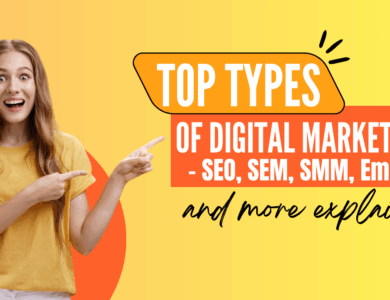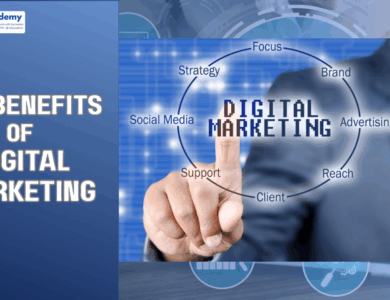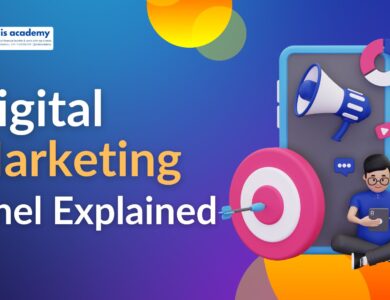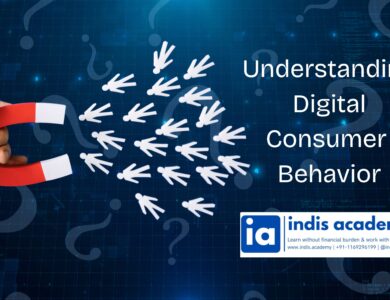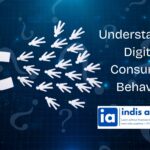Traditional vs Digital Marketing: Key Differences & Pros/Cons
Explore the key differences between traditional and digital marketing. Compare pros and cons to choose the best strategy for your business growth in 2025.
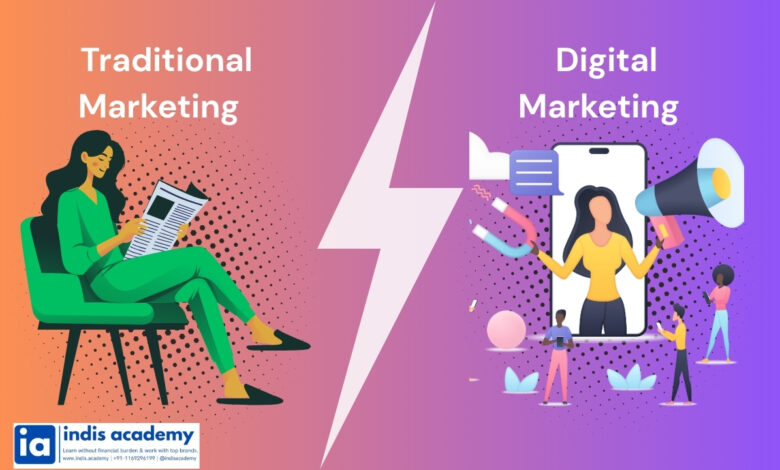
Imagine it’s the 1990s. You switch on your TV and see a Coca-Cola ad that instantly sticks in your head. Fast forward to 2025 – you’re scrolling Instagram and suddenly a personalized ad for a new beverage grabs your attention. That, in a nutshell, is the transformation from traditional marketing to digital marketing.
Marketing has always been about reaching the right people with the right message. But as technology evolved, so did the tools and strategies. Businesses today face a crucial decision: stick with traditional methods that have stood the test of time or embrace digital channels that dominate today’s landscape.
In this blog, we’ll break down the key differences between traditional and digital marketing, explore the pros and cons of each, and help you figure out which path is right for your brand – or whether a combination of both is the winning move.
Ready to explore the best of both worlds? Let’s dive in.
What is Traditional Marketing?
Before the internet revolutionized how businesses connect with people, marketing relied on physical and broadcast media what we now call traditional marketing.
Definition:
Traditional marketing refers to promotional strategies that do not involve the internet. These methods have been used for decades and are still relevant in certain markets and demographics.
Common Channels Include:
- Television Commercials – Mass appeal ads that reach households across cities and towns.
- Radio Advertising – Quick brand recall through catchy jingles and voiceovers.
- Newspapers & Magazines – Print ads and classifieds targeting specific regions or interests.
- Billboards & Hoardings – High visibility for passersby on highways and city streets.
- Pamphlets, Flyers & Brochures – Handouts used for promotions in retail, real estate, events, etc.
- Event Sponsorships & Trade Shows – Brand presence in physical business communities.
Why It Still Works:
While digital is booming, traditional marketing remains powerful in certain contexts. For example:
- Rural or semi-urban areas where internet penetration is low.
- Older age groups who still rely on newspapers or TV for information.
- Real-world events like exhibitions or product launches where physical presence matters.
Example:
A local jewelry store advertising during a popular regional TV show or putting up a full-page ad in a wedding magazine this helps build credibility and connect with people emotionally.
What is Digital Marketing?
If traditional marketing is like casting a wide net into the ocean, digital marketing is like fishing with a laser-targeted spear. It’s about connecting with your audience right where they spend most of their time online.
Definition:
Digital marketing refers to any marketing effort that uses the internet or an electronic device. It’s highly data-driven, interactive, and offers real-time performance insights something traditional channels can’t match.
Common Digital Marketing Channels:
- Search Engine Optimization (SEO): Ranking your website on Google to attract organic traffic.
- Pay-Per-Click (PPC) Ads: Paid ads on Google, Facebook, Instagram, etc., where you pay only when someone clicks.
- Social Media Marketing: Promoting your brand via platforms like Instagram, LinkedIn, YouTube, and Facebook.
- Email Marketing: Sending personalized emails for promotions, nurturing, or retention.
- Content Marketing: Blogs, videos, infographics, and eBooks that provide value and build trust.
- Affiliate & Influencer Marketing: Collaborating with influencers or partners to reach specific audiences.
Why It’s So Popular:
- Smartphones are everywhere.
- People spend hours daily scrolling, searching, or streaming.
- It’s easy to launch, test, and scale campaigns with a limited budget.
Example:
A startup launching a new skincare brand runs Instagram Reels, Google Ads, and sends weekly email tips all driving traffic to their website and boosting sales through an automated funnel.
Digital marketing doesn’t just advertise it builds communities, drives engagement, and allows even small brands to go global overnight.
Key Differences Between Traditional & Digital Marketing
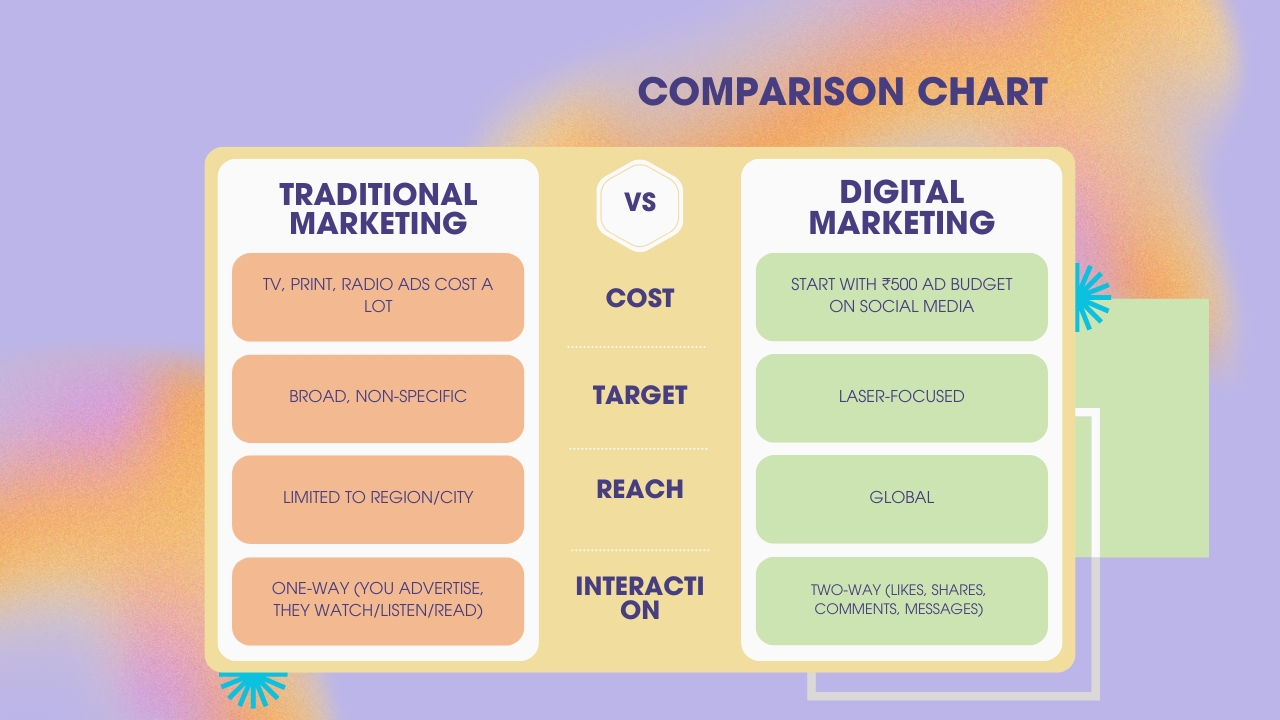
While both traditional and digital marketing aim to connect with customers, their methods, reach, cost, and impact vary dramatically.
Here’s a clear comparison to help you understand where they stand head-to-head:
| Aspect | Traditional Marketing | Digital Marketing |
|---|---|---|
| Cost | High (TV, print, radio ads cost a lot) | Budget-friendly (start with ₹500 ad budget on social media) |
| Targeting | Broad, non-specific | Laser-focused (age, interest, location, behavior, etc.) |
| Reach | Limited to region/city (mostly local or national) | Global (can target worldwide from Day 1) |
| Measurability | Hard to track performance | Real-time analytics (views, clicks, conversions, ROI) |
| Interaction | One-way (you advertise, they watch/listen/read) | Two-way (likes, shares, comments, messages) |
| Flexibility | Once it’s printed or aired, it can’t be changed | Instant edits, A/B testing, pausing/resuming campaigns |
| Time to Launch | Requires long planning and production cycles | Can be launched in hours or even minutes |
| Customer Feedback | Slow and often offline (in-person surveys, calls) | Instant via reviews, comments, DMs |
| Brand Building | Strong emotional impact via visuals, touch, and experience | Better for engagement, storytelling, and community building |
| Return on Investment | Hard to calculate and usually delayed | Easily trackable and optimized for better ROI |
Key Takeaway:
If you want to reach a mass audience quickly with strong brand recall, traditional marketing works best. But if you want measurable results, targeted reach, and agility, digital marketing is the winner.
Often, the smartest brands use a mix of both depending on their goals, audience, and budget.
Pros & Cons of Traditional Marketing
Even in today’s digital world, traditional marketing hasn’t lost its charm especially when you want to build authority, create lasting impressions, or target local audiences. But like every method, it comes with its own highs and lows.
Pros of Traditional Marketing
1. Strong Brand Recall
A TV commercial with a catchy jingle or a full-page newspaper ad can stick in people’s minds much longer than a social media post.
2. Tangible & Trustworthy
Printed brochures, newspaper ads, and event sponsorships feel more ‘real’ and credible, especially for older generations.
3. Mass Local Reach
Radio, TV, and billboards can reach large audiences in a specific city or region making them great for local businesses.
4. Great for Offline Audiences
In areas with limited internet access or low digital literacy, traditional methods are often the only effective way to reach customers.
5. Suitable for Big Budget Campaigns
For large brands that want to make a splash (think Super Bowl ads or Times of India front-page placements), traditional media delivers impact.
Cons of Traditional Marketing
1. Expensive & Hard to Scale
TV, print, and radio campaigns cost a lot to produce and run especially when you need repeated exposure to be effective.
2. Poor Measurability
It’s tough to know how many people actually saw your ad, let alone how many took action because of it.
3. Limited Personalization
Unlike digital ads, you can’t target a billboard only to 30-year-old fitness lovers living in Bangalore.
4. One-Way Communication
There’s no way for your audience to engage with a print ad or respond to a TV commercial in real time.
5. Time-Consuming to Modify
Printed flyers or booked media slots can’t be changed last-minute so mistakes can be costly.
Summary:
Traditional marketing is powerful for visibility and credibility, but lacks agility and precision. For businesses with deep pockets and offline audiences, it still works but tracking performance and ROI remains a challenge.
Read more articles:
- Top Benefits of Digital Marketing – ROI, Targeted Reach & Smarter Campaigns
- Understanding Digital Consumer Behavior: What Really Drives Online Buying?
Pros & Cons of Digital Marketing
Digital marketing has redefined the way businesses connect with their audience especially in a mobile-first, internet-driven world. Whether you’re a solo creator or a global brand, the digital space offers unmatched opportunities. But it’s not without its own set of challenges.
Pros of Digital Marketing
1. Cost-Effective for All Budgets
Startups and small businesses can advertise on Facebook or Google with as little as ₹500 and still get results.
2. Hyper-Targeted Audience Reach
You can show your ads to people based on age, interests, buying behavior, location, language even what device they use.
3. Real-Time Performance Tracking
Know exactly how many people saw your ad, clicked, converted, or bounced all within minutes.
4. Interactive and Engaging
Social media posts, YouTube videos, or quizzes invite real conversations, reactions, and shares building stronger relationships with your audience.
5. Instant Edits and A/B Testing
Want to change a headline or stop a non-performing ad? Do it in seconds no reprinting or reshooting required.
6. Scalable and Global
Launch a product in India today and reach customers in the US, UK, or UAE tomorrow all from one dashboard.
7. Automation & Funnels
Email marketing, lead generation, retargeting much of it can run on auto-pilot once set up.
Cons of Digital Marketing
1. Information Overload
Users see hundreds of ads daily so your message needs to fight for attention. Bland content won’t survive.
2. Ad Fatigue
People get bored of seeing the same ad again and again leading to low engagement and high costs if not managed well.
3. Constantly Changing Platforms
What worked on Instagram last month might flop today. Algorithms change, rules update you have to stay on your toes.
4. Requires Technical Know-How
Running effective Google Ads or SEO campaigns takes learning, experimentation, and sometimes expert help.
5. Privacy Concerns & Ad Blockers
With increasing data privacy regulations and users installing ad blockers, your reach can be restricted.
Summary:
Digital marketing offers speed, scale, precision, and insights that traditional methods can’t match. But to win online, you need creativity, strategy, and the ability to adapt quickly in an ever-changing digital world.
When to Use Traditional Marketing
Despite the digital wave, there are specific scenarios where traditional marketing still shines. It’s not about being outdated it’s about using the right tool for the job.
Here’s when traditional methods might be your best bet:
1. You’re Targeting an Older or Offline Audience
Not everyone is on Instagram or Googling products. If your audience includes senior citizens, rural customers, or people without reliable internet access, traditional channels like TV, radio, and print can work wonders.
Example: A health insurance brand promoting senior plans through regional newspapers and FM radio.
2. You Have a Local, Brick-and-Mortar Business
If you run a salon, restaurant, gym, or coaching center, location-based traditional marketing (billboards, flyers, radio ads) can help drive footfall in your area.
Example: A restaurant putting up a hoarding near a crowded highway to attract evening traffic.
3. You Want Broad Brand Visibility Fast
TV commercials and newspaper front pages still hold enormous credibility and reach. For big-budget campaigns that aim to dominate attention, traditional is powerful.
Example: A new car launch with high-gloss magazine ads and prime-time TV spots.
4. You’re Participating in an Event or Expo
Trade shows, exhibitions, and on-ground brand activations are all real-world events that thrive on physical touchpoints brochures, standees, posters, etc.
Example: A home décor brand using a pop-up booth and handing out catalogs at a real estate expo.
Bonus Tip:
Traditional marketing also works great as a trust-builder. A professional-looking flyer or a physical business card can create a lasting first impression especially in B2B or high-ticket services.
When to Use Digital Marketing
If you’re looking for scalable, cost-efficient, and measurable marketing, digital marketing is your playground. Whether you’re a solopreneur or managing a growing brand, the internet gives you the power to compete, connect, and convert without burning through massive budgets.
Here’s when digital marketing is the perfect fit:
1. You’re a Startup or Small Business with Limited Budget
Digital marketing levels the playing field. You don’t need crores for a campaign just a clear message and smart targeting.
Example: A handmade soap brand runs Facebook ads to target eco-conscious women aged 25–40 in metro cities all under ₹1,000.
2. Your Audience is Online (and Mobile-First)
If your ideal customers spend hours on Instagram, YouTube, or Google, that’s where you need to be.
Example: A youth-focused fitness app using influencer reels, Google search ads, and email funnels to drive app installs.
3. You Want Real-Time Data and Control
Unlike traditional campaigns that run blind, digital marketing lets you test, tweak, pause, or scale campaigns instantly.
Example: An edtech company notices low click-through on one ad set and quickly replaces it with a better-performing one within minutes.
4. You’re Targeting Global or Niche Audiences
Selling digital products? Running a remote business? Digital marketing helps you reach a global audience or hyper-targeted groups with precision.
Example: A SaaS brand targeting HR managers in the US through LinkedIn ads and keyword-targeted blog content.
5. You Want to Automate and Scale Fast
From lead generation to email nurturing to retargeting digital marketing allows automation that works 24/7, saving time and effort.
Example: A coaching institute sets up an auto-funnel: Google ad → landing page → lead magnet → WhatsApp message → Zoom class invite.
Pro Tip:
Digital marketing is not just for selling it’s also a powerful tool for building brand trust, educating customers, and creating long-term engagement through storytelling.
Integrated Approach: Why the Best Brands Use Both
In today’s competitive landscape, the smartest brands don’t choose either traditional or digital marketing they combine them to create a powerful omnichannel experience.
Why? Because your audience is everywhere watching TV, scrolling Instagram, reading newspapers, Googling reviews, attending events. To truly connect, your brand needs to show up across touchpoints.
The Power of Integration
When traditional and digital marketing are used together strategically, they can reinforce each other’s impact:
- TV Ads + YouTube Retargeting:
A TV campaign creates awareness, and follow-up YouTube ads reinforce the message to interested viewers. - Billboards + Instagram Geotargeting:
A billboard on a major road creates interest, and geotargeted Instagram ads in the same area convert that interest into action. - Event Sponsorship + Email Marketing:
A brand sponsors a local business event and collects leads for post-event nurturing via email sequences.
Real-World Example:
Take a brand like Nike:
- They run high-impact TV commercials during sports events.
- Place billboards in major cities.
- Use Instagram and YouTube influencers to connect with younger audiences.
- Retarget visitors through email and app push notifications.
This multi-channel strategy not only builds a memorable brand image but also drives direct sales and loyalty.
When Integration Works Best:
- Product launches
- Seasonal sales campaigns
- Brand repositioning
- Nationwide promotions
- Educational events or summits
Bottom Line:
Traditional marketing builds broad trust and brand recall. Digital marketing brings precision, engagement, and action. Together? They amplify each other’s strengths and create a seamless customer journey.
Conclusion
Marketing is no longer about choosing between old-school charm and new-age tech it’s about knowing what works best for your audience, your goals, and your budget.
Traditional marketing brings trust, emotion, and broad visibility. It’s great when you want to make an impression that lasts especially offline. On the other hand, digital marketing is your go-to if you want control, scalability, precise targeting, and measurable ROI all at your fingertips.
But here’s the truth: It’s not a battle. It’s a balance.
The most successful brands don’t limit themselves to one side. They combine traditional’s credibility with digital’s agility to create integrated marketing strategies that speak to customers at every stage of their journey whether they’re flipping through a magazine or scrolling through their phone.
So, if you’re a business owner, marketer, or aspiring creator start by asking yourself:
- Where is my audience right now?
- What message do I want to deliver?
- And how can I be present both online and offline in a way that builds real trust?
Because when strategy meets the right platform, marketing becomes more than promotion it becomes connection.
